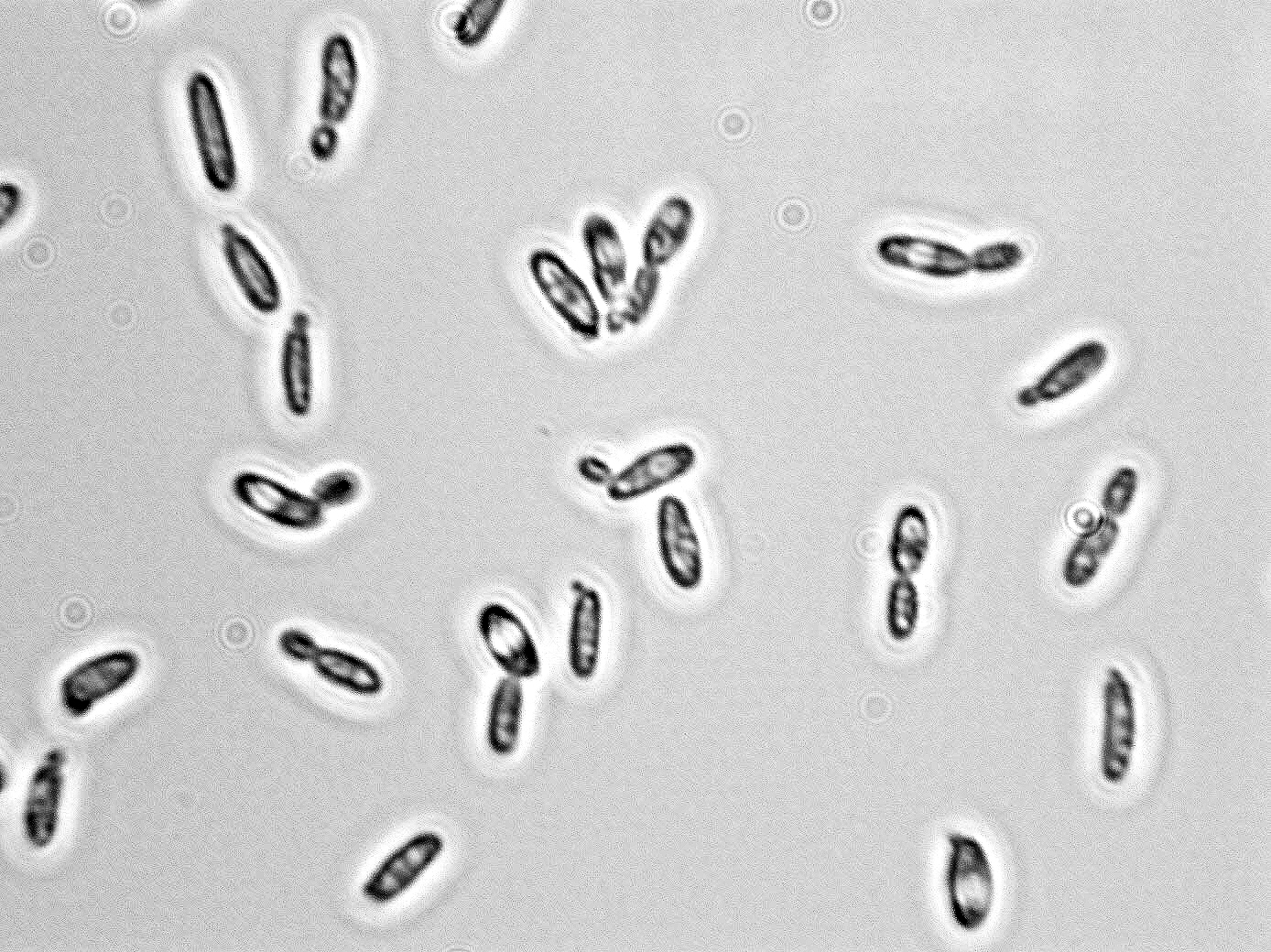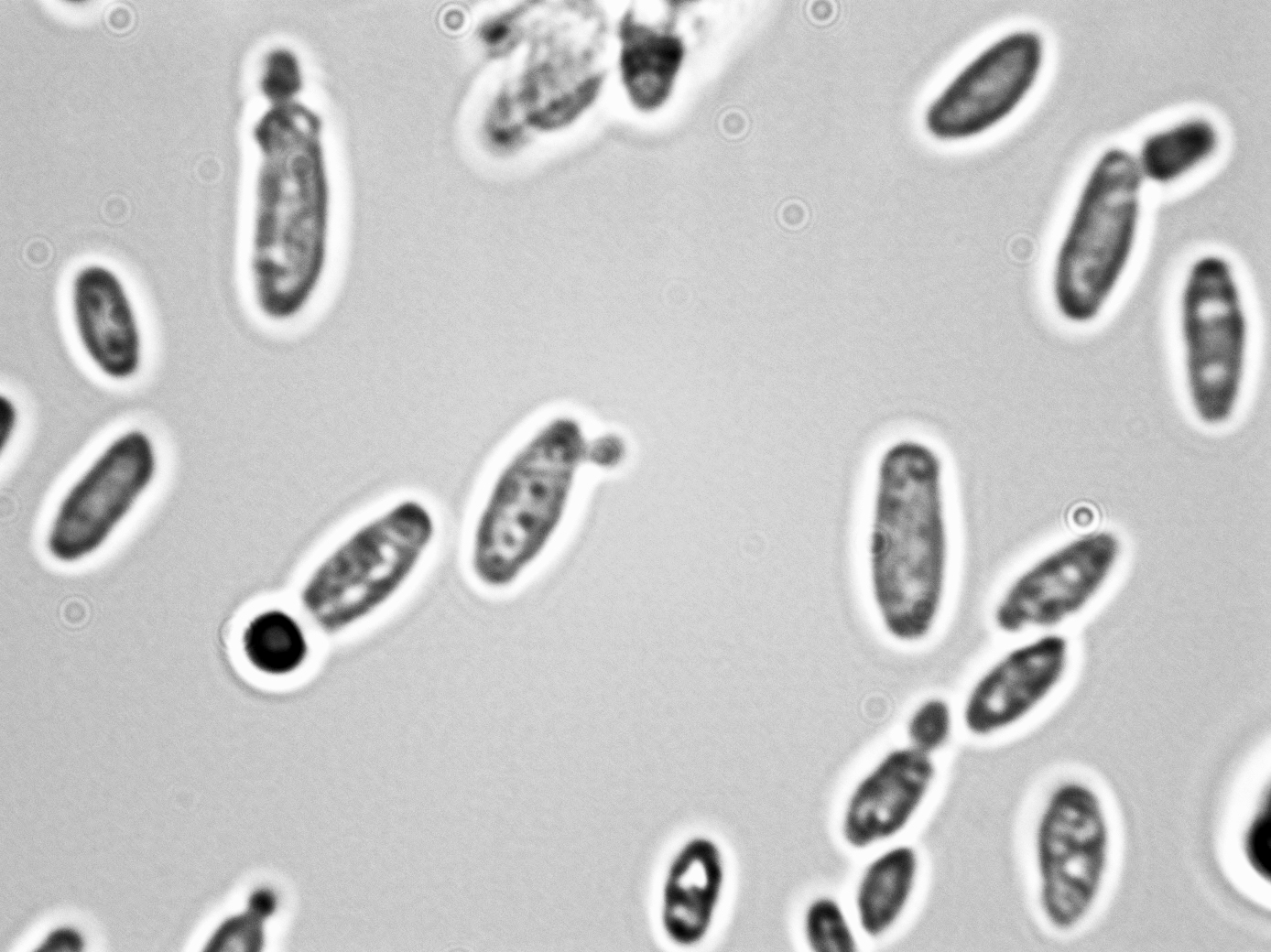Genus/species: Issatchenkia orientalis (Candida krusei, anamorph; Saccharomyces krusei)
Classification: Ascomycete; teleomorph
Morphology:
- Cell: replication by budding; ellipsoidal to elongated; singly or in pairs; simple to elaborate pseudohyphae may be formed.
- Colony: Malt agar: After 3 days at 25"C, the cells are ovoidal to elongate, 2.2 to 4.3 by 3.2 to 9.3 um, and single or in pairs. Growth is butyrous and light cream colored.
- Zygote: give raise to a succession of diploid cells that sporulate, conjugated asci are rarely if ever observed.
- Ascus: One or two spheroidal ascospores are formed in each persistant unconjugated ascus.
- Liquid growth: pellicle formed in liquid media.
 |
 |
 |
 |
Physiological traits:
- Fermentation: Glucose is strongly fermented. There is no fermentation of galactose, maltose, sucrose, lactose, raffiinose, or trehalose.
- Assimilation: Carbon compounds assimilated: Glucose, Ethanol, Lactate, Citrate, Succinate; variable assimilation of Sorbose, Ribose, D-glucosamine, Glycerol. No assimilation of nitrate or nitrite; Ethylamine and tryptophan used as sole N source; use of lysine and cadaverine as sole N source variable; growth in vitamin-free medium although rarely some strains show no growth
- Growth: 37, 40 C+, 42 and 45 C: variable.
- Growth Sensitivities: some strains resistant to 10% NaCl, high glucose and 1% acetate; sensitive to cycloheximide.
- Chromosomes: 3-8 bands observed.
Ecological Traits:
Found on the surface of fruits and fruit juices
Distinguishing Features:
- Assimilation of potassium nitrate: Negative.
- Growth in vitamin-free medium: Positive.
- Growth in 10%sodium chloride plus 5%glucose in yeast nitrogen base: Positive.
- Growth at 37°C: Positive.
- Growth at 40°C: Negative.
- Starch formation:Negative.
- Production of esters: Negative.
- Liquefaction of gelatin: Negative.
Sensitivities: See Physiological traits
References:
- Cleenwerk, I et al. Re-examination of the genus Acetobacter, with descriptions of Acetobacter cerevisiae sp. nov. and Acetobacter malorum sp. nov. International journal of systematic and evolutionary biology. (2002) 52, 1551-1558
- Kurtzman, C. P. Emendation of the Genus Issatchenkia Kudriavzev and
- Comparison of Species by Deoxyribonucleic Acid Reassociation, Mating Reaction, and Ascospore Ultrastructure.International journal of systematic bacteriology. 1980,p.503-513
